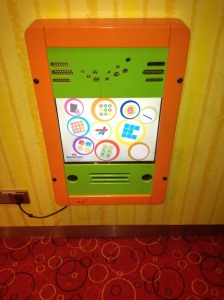I expect most people who got to conferences find some excuse to bunk off, check out the town, or go shopping. But I’ve just returned from Museum Next in Amsterdam. It’s the largest gathering of museum folk interested in technology and innovation in Europe and each session provoked me to think differently about my work in museums.
Previously I’ve been suspicious that the attraction of technology is just the pleasure it gives rather than the good it can do. I’ve also been concerned that social and technological innovation in museums was estranged from each other.
By social innovation I mean the way we find new ways of organising to develop human relationships, strengthen communities and promote social justice. Some within the community development sphere worry about social and economic exclusion from digital culture and its potential to alienate individuals and atomise society.
But I sense that, rather like the well-being and environmental agendas explored in Happy Museum, Social and digital innovation are converging. Rob Stein from Dallas Museum of Art talked about social capital metrics to measure effectiveness of a digital strategy. It seems that we’ve both been inspired by the work of American sociologist Robert Puttnam. Trish Brown described the VLOG project at the Whitney Museum of American Art in New York. These are video blogs by participants using American Sign Language. Trish said that “we should remain true to our inclusive practice as well as our excitement as to the possibilities of technology.”
In Antwerp’s Royal Museum of Fine Art (KMSKA) the Jongbloed programme inspires creativity in 16 to 24 year olds through a peer-led flexible volunteer programme. One group went away to summer camp to immerse themselves in the work of Flemish Expressionism before working with a tech developer to create the Permeke app
Finally Oonagh Murphy noted the modest investment of two 3-d printers in Newark Museum, New Jersey had a transformational effect on the way children learn about culture and technology. As nascent technology, 3-d creates objects very slowly. The process of learning how to code means children develop a relationship both with the museum and each other over a long period.
The language of digital vaunts connectivity and collaboration both technically and in the human sense. This, as much as anything else should spur the museum world view innovation and co-operation as the norm. Digital is more than a tool, it democratises material culture placing it more centrally in the civic realm. The Rijksmuseum ‘fully open’ Rijkstudio inspire citizen curators, assembling personalised on-line collections or even gifts. This further emphasises that this art belongs to and helps shape the nation.
A few weeks ago the Happy Museum Project opened applications for the next round of commissioned projects to help re-imagine their purpose. We want to support “sustainable museum practice which fosters well-being which doesn’t cost the earth”. We’d love to love to see proposals from museums wishing to explore how the virtual and flesh worlds can collaborate to further help people connect.


Pingback: @MarDixon » Blog Archive » #MuseumNext 2013 – Past the Sessions